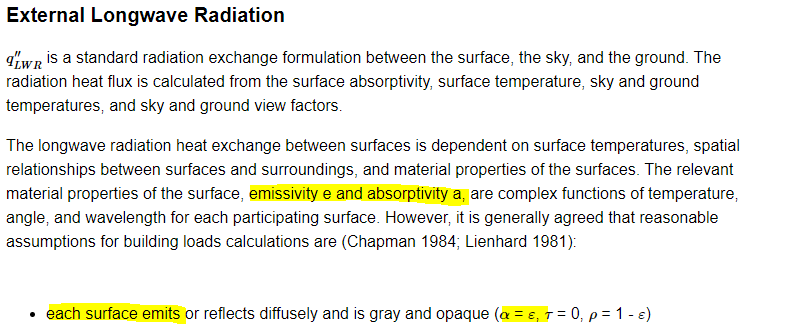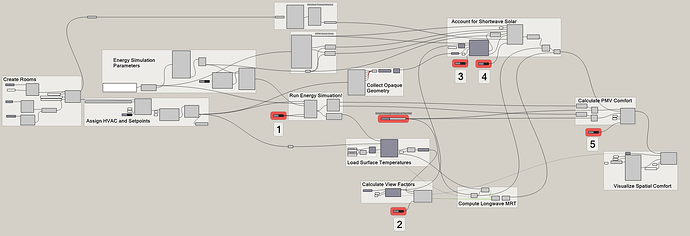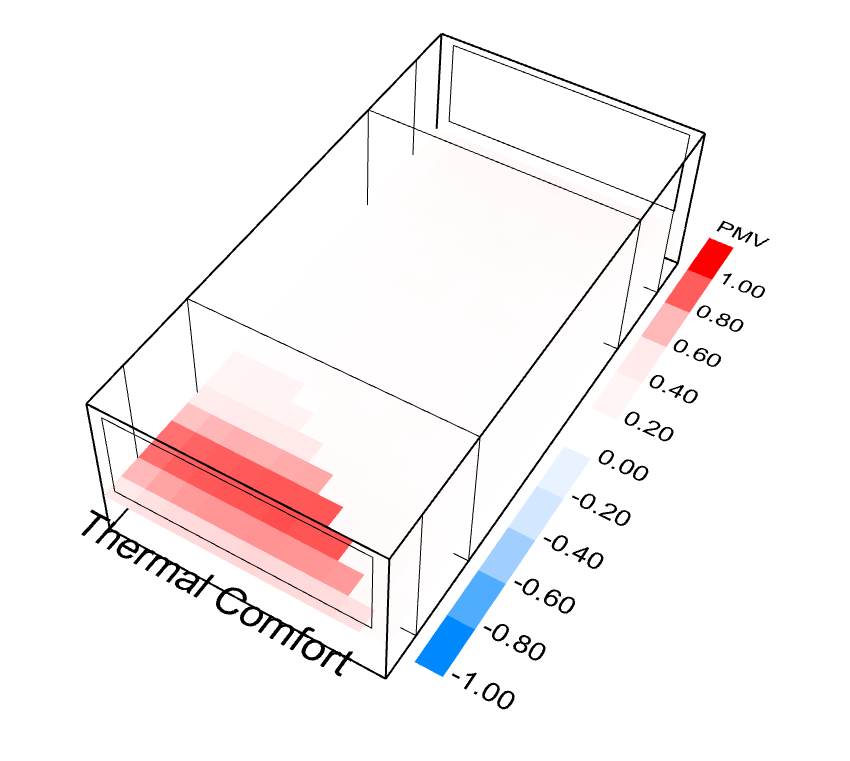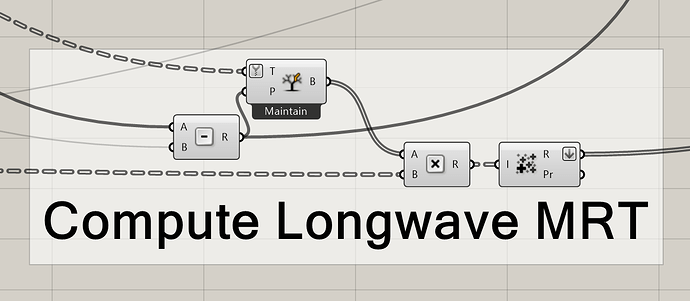@syltetoy
However, in case it is, it seems to me that the formulation in Honeybee only accounts for the emitted longwave radiation, not the reflected one, and a change in all emissivity values (if added) would result in a change in Tmrt.
This sounds right, I’ve never seen MRT calculations accounting for reflected long wave radiation, presumably because you’re not usually surrounded by low-emittance materials, and the resulting magnitude of reflected long-wave radiation is so small it’s not worth the extra complexity of calculation (i.e calculating bounces etc).
Besides, the results would be expressed in K^4, so honestly I am not really understanding that formulation unless is linearized (as it is suggested on the Energyplus webpage).
I guess you’re talking about this formula, and the fact that they’re not taking the fourth root of the solution:

I agree, it doesn’t make sense. I think it’s a typo. We can assume all temperatures are taken to the fourth power for the purpose of the discussion, since we’re talking about circumstances where the linear assumption fails (large temperature differences between surfaces). It doesn’t change any of the formulas in a meaningful way (although implementation-wise multiplying really huge numbers by small fractions is a headache when trying to maintain numerical precision).
At that point for formulation would be equivalent to that in my previous message (from the paper). *
I have also checked in the ASHRAE Fundamentals Handbook and the Honeybee Tmrt formulation is presented under the assumption that all surfaces are black body emitters.
I’ve looked over the paper you are referencing. I can see that that this formula:
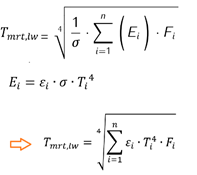
…follows from the paper’s version by limiting to just long-wave, and expanding the E_i term:
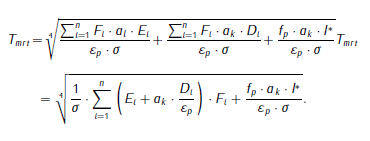
The math is correct. However, it is missing the normalizing constant (dividing by the sum of the emissivities and view factors) that all the EnergyPlus MRT calculations incorporate when using angle factors.
I believe this is the case because the formula in the paper you’re referencing assumes the radiation balance includes quantities with larger radiation magnitudes like the diffuse or direct solar components. If you are only looking at long-wave radiation, the associated magnitude is smaller, and you need to normalize the calculation to deal with omissions in the radiation balance (like for example, the long-wave reflections). I could be wrong about this, so correct me if there’s an error in my logic.
But intuitively it makes sense. For example, if you are surrounded by two flat, infinite plates, both with an emissivity of 0.1, and a surface temperature of 29C, your formula would produce an MRT close to zero. If you include the normalization constant, the MRT would be 29C, since the 0.1 emissivity and 0.5 view factor would be normalized to 0.5. In an actual radiation balance, the reflected long-wave radiation would be significant and summed with the (very small) emitted radiation, such that there would be zero radiation exchange between you and your environment (assuming you are also ~29C and have emissivity of ~1), and thus the actual MRT should be close to 29C.
Basically, the normalizing constant ensures that the view-factor and emissivity sums to one, and thus acts like a proper radiation balance, whereas your formula can create situations where the radiation isn’t balanced.
